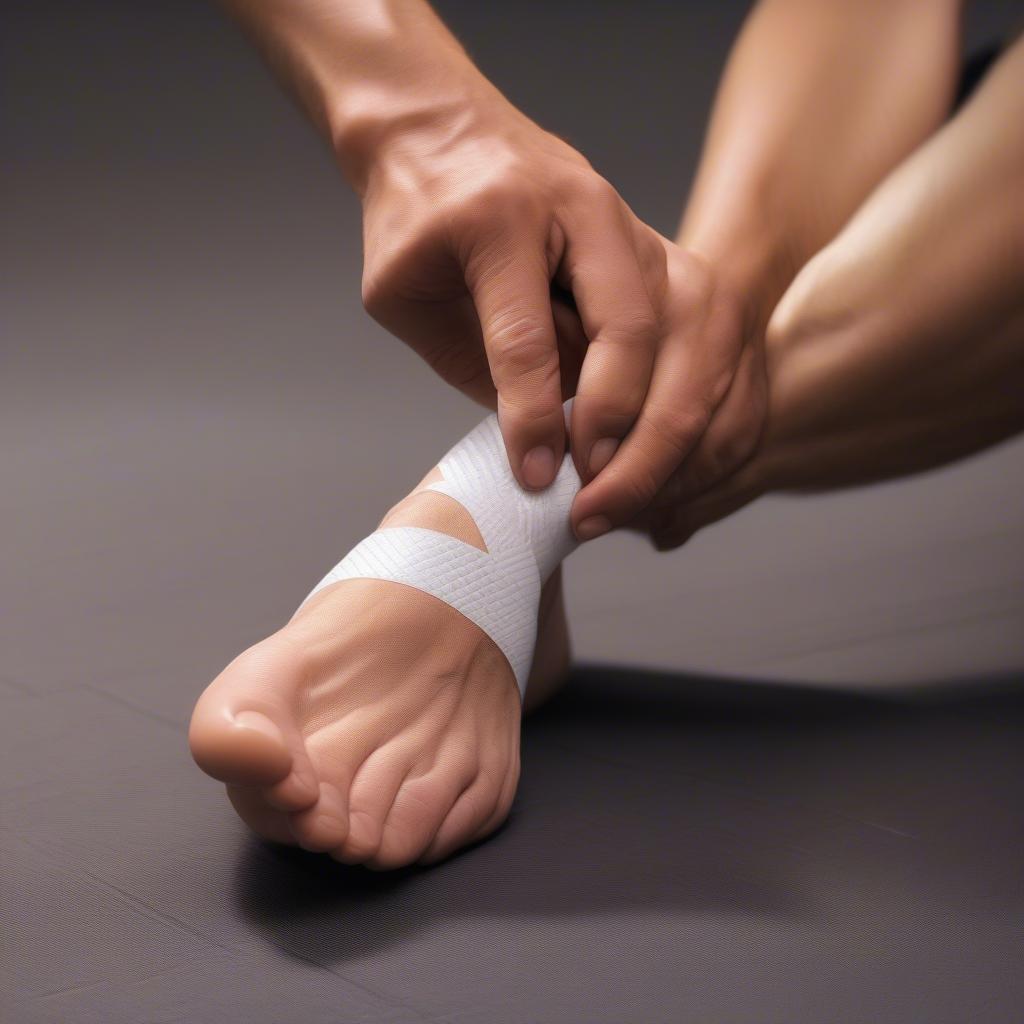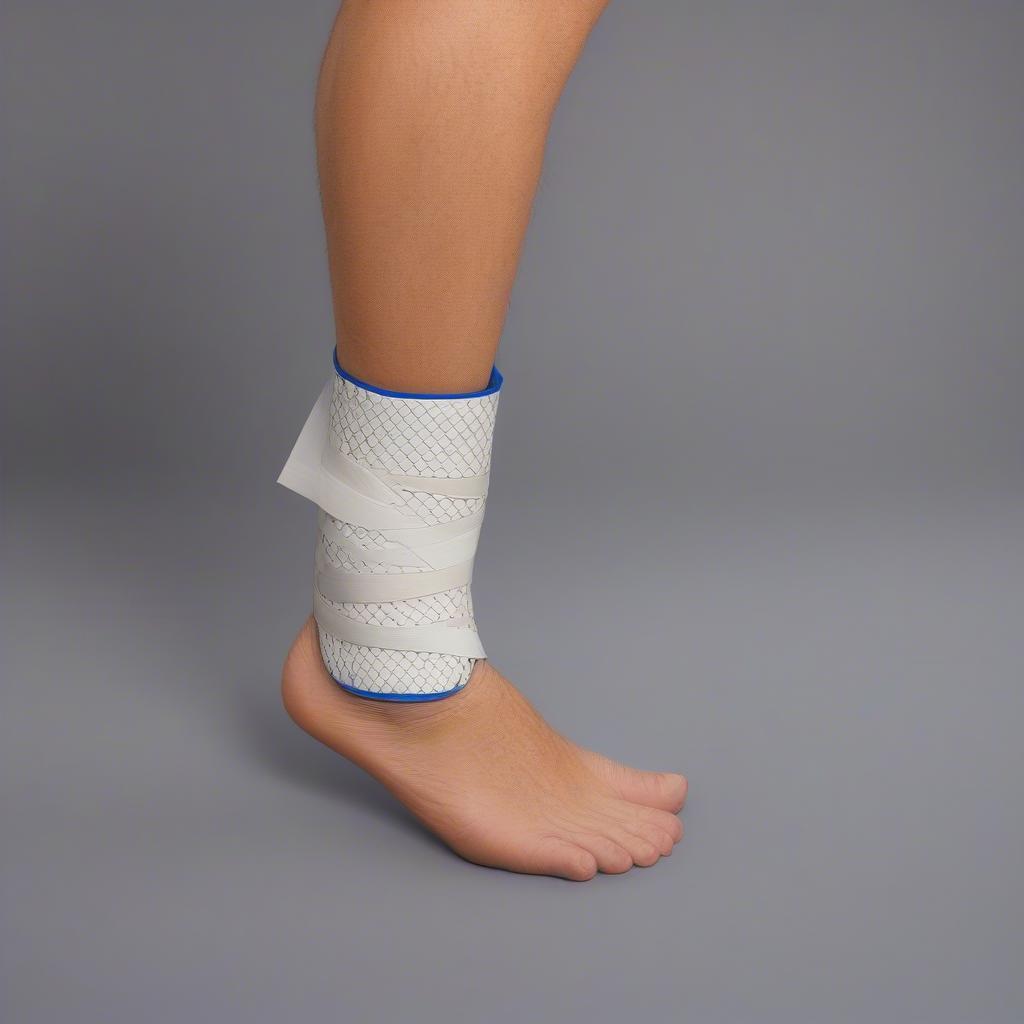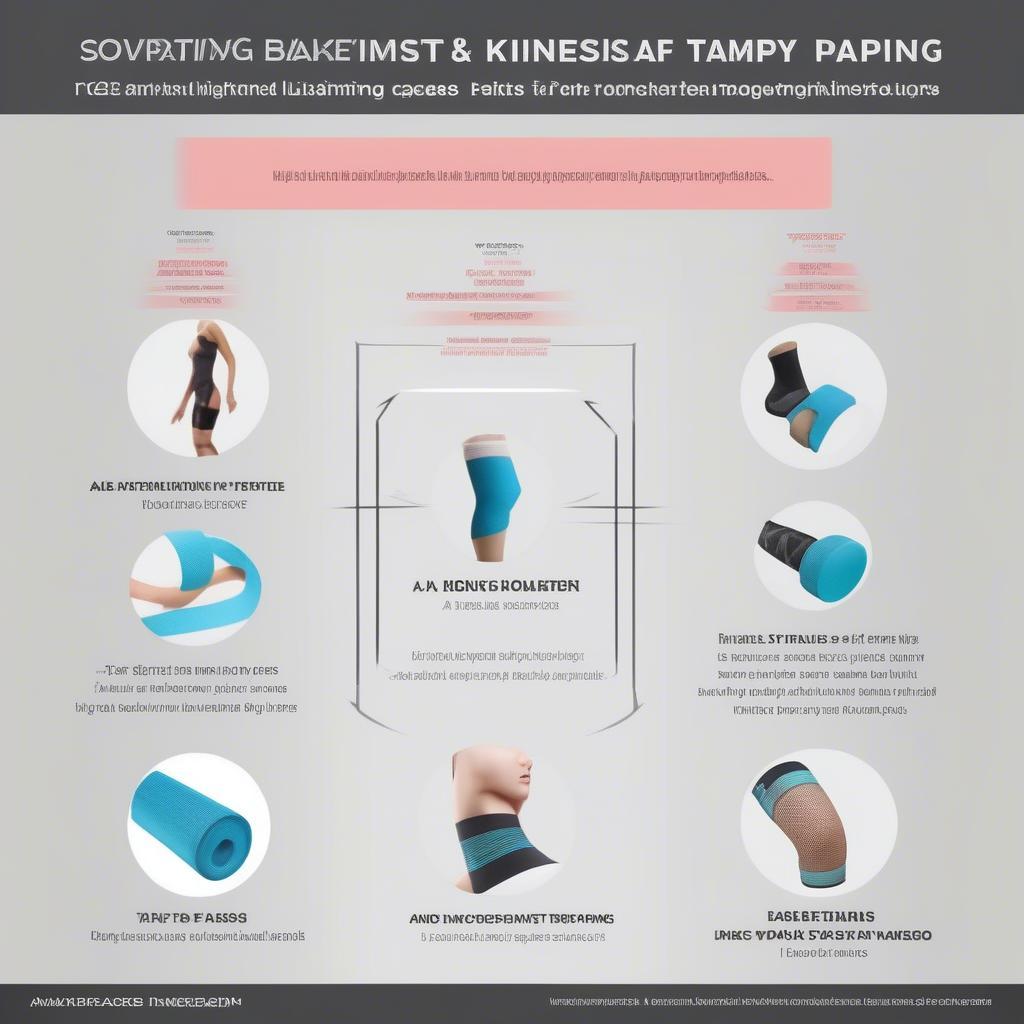Basket Weaving
Basket Weave Athletic Tape: A Comprehensive Guide
Basket Weave Athletic Tape is a specialized taping method used to provide support and stability to injured joints, particularly the ankle. It’s a popular choice among athletes due to its flexibility and breathability. This guide explores the benefits, application techniques, and everything you need to know about basket weave taping.
Understanding Basket Weave Taping
Basket weave taping involves overlapping strips of athletic tape in a crisscross pattern, resembling the weave of a basket. This technique creates a strong, yet flexible support structure that allows for a greater range of motion compared to traditional rigid taping methods. It’s commonly used for ankle injuries, providing stability while allowing for some movement, crucial for athletes returning to activity.  Basket weave tape being applied to an ankle
Basket weave tape being applied to an ankle
Why Choose Basket Weave Taping?
- Enhanced Stability: The interwoven pattern creates a secure and supportive structure for injured joints, minimizing the risk of re-injury.
- Flexibility and Range of Motion: Unlike rigid taping, basket weave allows for a degree of flexibility, essential for athletes who need to maintain mobility.
- Breathability: The spaces between the tape strips allow for better airflow, reducing the likelihood of skin irritation and discomfort.
- Ease of Application: While it requires some practice, basket weave taping is relatively straightforward to apply, even without professional assistance.
- Cost-Effective: Athletic tape is readily available and affordable, making basket weave taping a cost-effective support solution.
The benefits of basket weave extend beyond just ankle support. It can be adapted for other joints like the wrist or knee, offering a versatile approach to injury management.
Applying Basket Weave Tape to the Ankle: A Step-by-Step Guide
Applying basket weave tape correctly is essential for maximizing its effectiveness. Here’s a step-by-step guide to applying it to the ankle:
- Prepare the Ankle: Clean and dry the ankle thoroughly. Shave any excess hair for better tape adhesion. You can apply pre-tape spray for added protection.
- Anchor Strips: Apply two anchor strips: one around the lower leg, just below the calf muscle, and another around the foot, just below the toes.
- Stirrups: Apply stirrup strips from the medial (inside) side of the ankle, up and over the heel, to the lateral (outside) side. Repeat this process several times, overlapping each stirrup slightly.
- Horseshoes: Apply horseshoe strips starting from the lateral side of the ankle, under the heel, and up the medial side. Overlap each horseshoe strip slightly, creating the basket weave pattern.
- Closing Strips: Apply two final anchor strips over the stirrups and horseshoes to secure the tape.
 Finished basket weave taping on an ankle Remember, practice makes perfect. Don’t be discouraged if your first attempt isn’t perfect. gibney basket weave ankle taping
Finished basket weave taping on an ankle Remember, practice makes perfect. Don’t be discouraged if your first attempt isn’t perfect. gibney basket weave ankle taping
Commonly Asked Questions About Basket Weave Athletic Tape
How long can I leave basket weave tape on?
Typically, basket weave tape can be left on for 24-48 hours. However, it’s important to monitor for any signs of discomfort, skin irritation, or discoloration.
Can I shower with basket weave tape on?
While brief showers are generally acceptable, prolonged exposure to water can weaken the adhesive and reduce the effectiveness of the taping.
Is basket weave taping suitable for all ankle injuries?
Basket weave taping is effective for many ankle injuries, particularly sprains and instability. However, it’s crucial to consult with a healthcare professional or athletic trainer for proper diagnosis and treatment recommendations. Some severe injuries may require more specialized care.
Basket Weave Tape vs. Other Taping Methods
Basket weave offers a unique blend of support and flexibility compared to other methods. Rigid taping, while providing strong support, can restrict movement significantly. Kinesio taping, on the other hand, focuses on muscle activation and pain relief rather than joint stability.  Comparison of different athletic taping methods
Comparison of different athletic taping methods
Dr. Emily Carter, a renowned sports physician, notes, “Basket weave taping is a valuable tool in sports medicine. Its ability to provide stability without compromising mobility makes it an ideal choice for athletes recovering from ankle injuries.”
Conclusion
Basket weave athletic tape is a versatile and effective technique for providing support and stability to injured joints, especially the ankle. Its unique crisscross pattern offers a balance between stability and flexibility, making it a preferred choice for athletes. By understanding the application process and benefits, you can effectively utilize basket weave taping to enhance recovery and prevent further injury. For more in-depth information and resources on ankle taping techniques, please visit our guide on gibney basket weave ankle taping.
FAQ
- What type of tape should I use for basket weave taping? Non-stretch athletic tape is recommended.
- Can I apply basket weave tape myself? Yes, with practice. However, consulting a professional for initial guidance is beneficial.
- How tight should the basket weave tape be? Snug but not constricting. It should feel supportive without cutting off circulation.
- What are the signs that the tape is too tight? Numbness, tingling, or discoloration of the toes indicate the tape is too tight.
- How can I remove the tape safely? Use blunt-ended scissors to carefully cut the tape, avoiding the skin.
Need assistance? Contact our 24/7 customer support hotline: +84 388 951 999. Our offices are located in Hanoi, Vietnam and Tech Avenue, Suite 12, San Francisco, CA 94105, USA.
